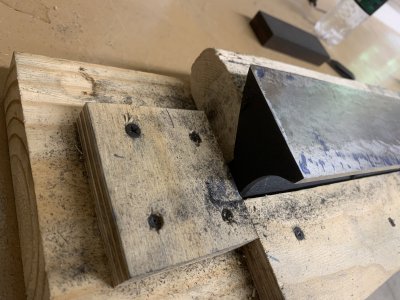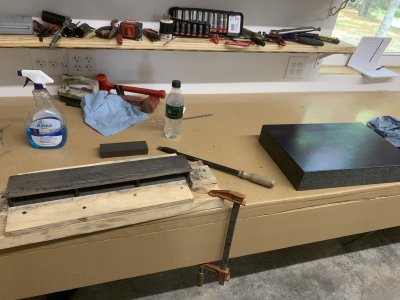- Joined
- Feb 25, 2021
- Messages
- 3,271
I have a few lathes where I want to clean up the cross slide and compound, so I figured I start by making a straight edge. Got this casting from dgfoster a couple years ago. Just getting around to this, milled the faces, and just started scraping. Of course it would be nice if I had a suitable surface grinder that worked, but that's another restoration project yet to be tackled. The bottom was milled on the horizontal part of my Grizzly horizontal/vertical mill. The angle face was milled on the K&T 3k vertical with a 6" face mill. The K&T definitely left a flatter face.
I suppose if I'm going to a lot of this I'll have to invest in a power scraper. Obviously the biax are the only real name in the game but I can see trying out a demolition saw conversion before dropping the $2k+ on a biax. That way I'll appreciate the real thing But the surface grinder would probably be a better start! (And thus, he heads further down the rabbit hole)
But the surface grinder would probably be a better start! (And thus, he heads further down the rabbit hole)


I suppose if I'm going to a lot of this I'll have to invest in a power scraper. Obviously the biax are the only real name in the game but I can see trying out a demolition saw conversion before dropping the $2k+ on a biax. That way I'll appreciate the real thing








